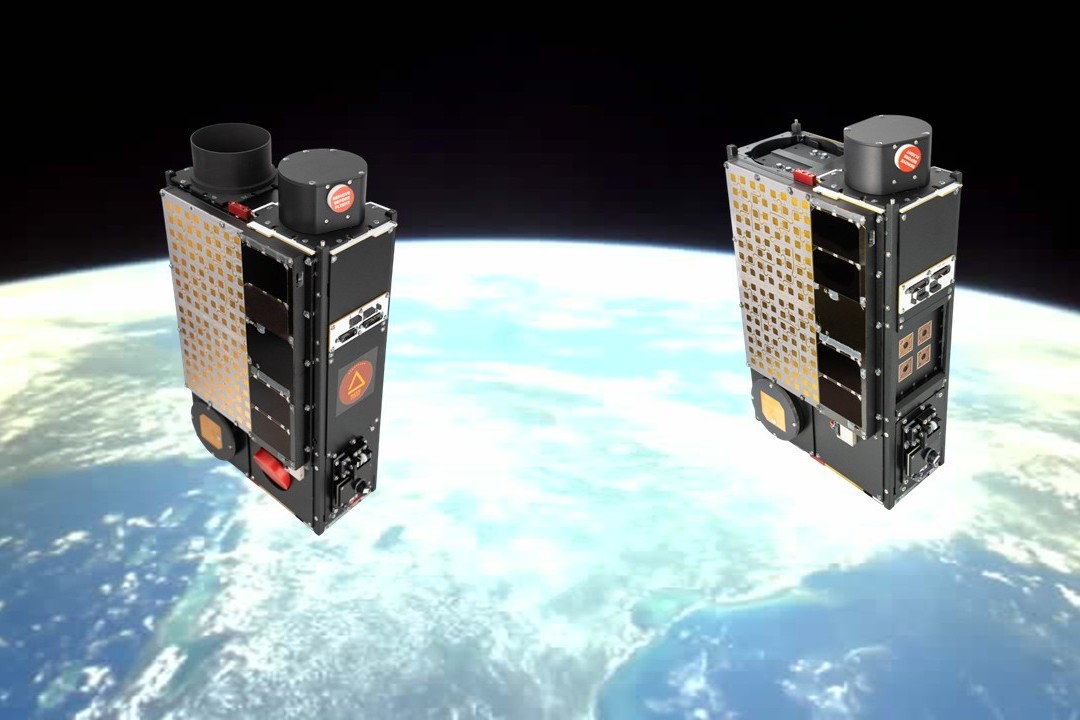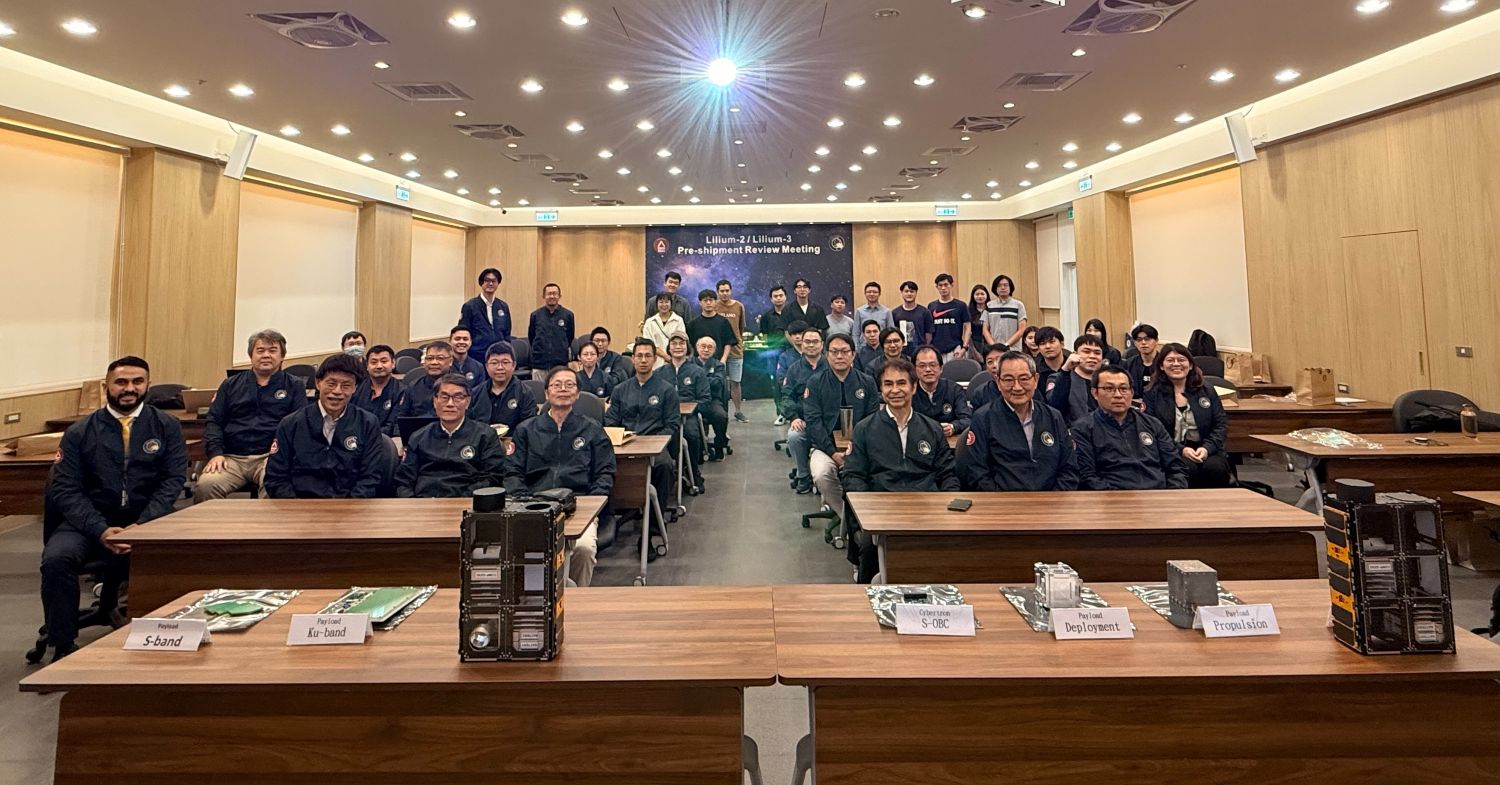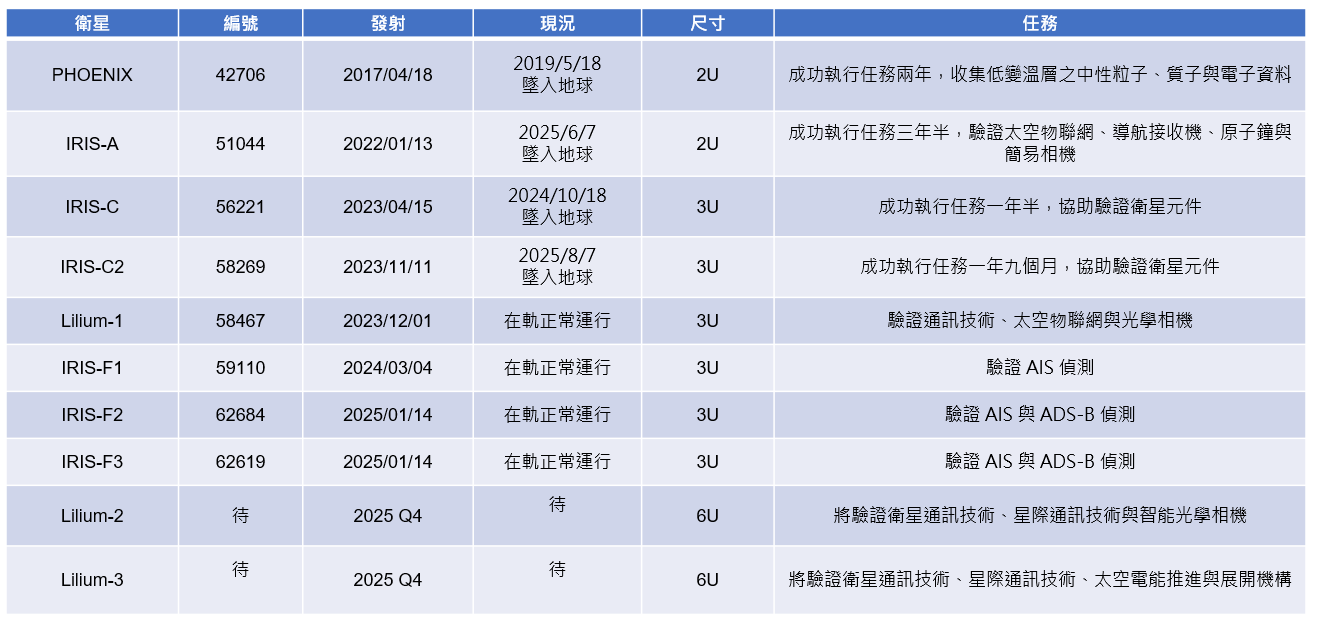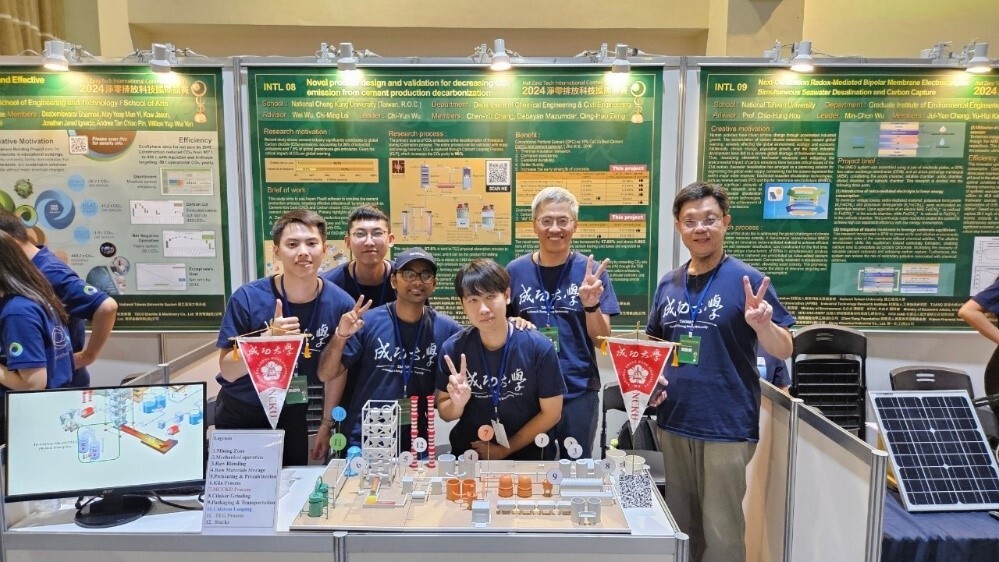SDG9
NCKU CubeSats Reach New Milestone — Lilium-2 and Lilium-3 Set to Embark on Their Journey into Space
In celebration of National Cheng Kung University’s (NCKU) 94th anniversary, the NCKU CubeSat Research Center has once again showcased Taiwan’s strong capabilities in space research and technology. Two CubeSats developed by NCKU — Lilium-2 (百合二號) and Lilium-3 (百合三號) — are scheduled to launch aboard a SpaceX Falcon 9 rocket from Vandenberg Space Force Base in California into a 520-km low Earth orbit in the fourth quarter of 2025. The mission will share the launch vehicle with the National Space Organization’s FORMOSAT-8 Zeppelin satellite, underscoring the diversity and collaborative momentum of Taiwan’s space development efforts.
The “Lilium” CubeSat series is supported by the National Science and Technology Council’s CubeSat Key Technology Development Project and is led primarily by NCKU’s CubeSat Research Center, in collaboration with National Taiwan University (國立台灣大學), National Taiwan University of Science and Technology (國立台灣科技大學), Tamkang University (淡江大學), and several others. Industry partners—including Satoro Taiwan Inc. (智探太空), Liscotech System Co., Ltd. (捷揚航電), and Elitegroup Computer Systems (精英電腦) — also contributed to the mission, with additional support from the Taiwan Space Agency (TASA), the National Center for Instrumentation Research, and the Metal Industries Research & Development Centre (MIRDC). The project spans three years. In 2023, the team successfully launched Lilium-1, which validated multiple communication and imaging technologies and continues to operate normally in orbit. The rapid two-year development and integration of Lilium-2 and Lilium-3 further demonstrates NCKU’s strengths in systems engineering, cross-disciplinary collaboration, and agile development.
Autonomous Communications and Space Networking: Building the Foundation for Digital Resilience
Lilium-2 and Lilium-3 are both six-unit (6U) CubeSats measuring 10 × 20 × 30 cm and weighing approximately 10 kilograms. The two satellites will validate key technologies including low-Earth-orbit (LEO) communications, space networking, and inter-satellite links. Lilium-2 carries an independently developed Ku-band high-speed communication payload for satellite-to-ground communication, while Lilium-3 supports both satellite-to-ground and inter-satellite communication tests. Together, they will achieve Taiwan’s first inter-satellite communication experiment.
During the development of the satellites and payloads, the NCKU team has closely collaborated with the Institute for Information Industry and domestic companies to establish an open and user-friendly LEO satellite testing platform, aiming to further promote industrial development. This mission not only strengthens Taiwan’s LEO satellite communication capabilities but also lays a solid foundation for future space networking and resilient communication technologies.
Artificial Intelligence in Space — Opening a New Era of Intelligent Remote Sensing
Lilium-2 carries an AI-enabled remote sensing payload developed domestically, capable of Earth imaging and real-time object detection from 520 km above the surface. The system integrates optical imaging and edge-computing technologies, combining efforts from NTUST, NARLabs’ Instrument Technology Research Center, AAE Aerospace, and NCKU. This advances real-time data processing directly in space, benefiting future commercial applications and national security.
Electric Propulsion and Deployable Mechanisms — Showcasing New Technologies for Space Sustainability
Lilium-3 is equipped with an independently developed vacuum arc thruster, marking Taiwan’s first in-orbit electric propulsion experiment. This system enables attitude control and orbital maneuvers to support collision avoidance and extend the satellite’s mission life. In addition, the satellite features an innovative deployable mechanism that uses tape-spring boom structures to increase solar power collection area and antenna gain, thereby improving energy efficiency and communication performance.
Lilium-3 also adopts a hosted payload approach, carrying a flight computer from Elitegroup Computer Systems and a secure communication module from Satoro Taiwan Inc., enabling the acquisition of critical flight heritage data. The successful validation of these technologies will contribute to advancing space sustainability and enhancing the autonomous operational capabilities of satellites.
Ten Satellites in Ten Years — NCKU Continues to Advance Taiwan’s Space Ambitions
Since 2017, NCKU has developed, launched, and operated multiple CubeSats, all of which have successfully completed their missions. With the upcoming launch of Lilium-2 and Lilium-3, NCKU is poised to reach the milestone of “Ten Satellites in Ten Years,” underscoring its long-term commitment to space research and education.
Looking Ahead — Strengthening Taiwan’s Space Research and Industry
Project leader Professor Chih-Ching Chuang (莊智清) noted that the Lilium satellite program not only accelerates the advancement of Taiwan’s space technologies but also plays a crucial role in cultivating the next generation of space professionals. Through close collaboration among academia, research institutions, and industry partners, NCKU aims to remain a driving force in Taiwan’s space technology and industrial development, helping to build a solid foundation for the nation’s presence on the international space stage.
The “Lilium” CubeSat series is supported by the National Science and Technology Council’s CubeSat Key Technology Development Project and is led primarily by NCKU’s CubeSat Research Center, in collaboration with National Taiwan University (國立台灣大學), National Taiwan University of Science and Technology (國立台灣科技大學), Tamkang University (淡江大學), and several others. Industry partners—including Satoro Taiwan Inc. (智探太空), Liscotech System Co., Ltd. (捷揚航電), and Elitegroup Computer Systems (精英電腦) — also contributed to the mission, with additional support from the Taiwan Space Agency (TASA), the National Center for Instrumentation Research, and the Metal Industries Research & Development Centre (MIRDC). The project spans three years. In 2023, the team successfully launched Lilium-1, which validated multiple communication and imaging technologies and continues to operate normally in orbit. The rapid two-year development and integration of Lilium-2 and Lilium-3 further demonstrates NCKU’s strengths in systems engineering, cross-disciplinary collaboration, and agile development.
Autonomous Communications and Space Networking: Building the Foundation for Digital Resilience
Lilium-2 and Lilium-3 are both six-unit (6U) CubeSats measuring 10 × 20 × 30 cm and weighing approximately 10 kilograms. The two satellites will validate key technologies including low-Earth-orbit (LEO) communications, space networking, and inter-satellite links. Lilium-2 carries an independently developed Ku-band high-speed communication payload for satellite-to-ground communication, while Lilium-3 supports both satellite-to-ground and inter-satellite communication tests. Together, they will achieve Taiwan’s first inter-satellite communication experiment.
During the development of the satellites and payloads, the NCKU team has closely collaborated with the Institute for Information Industry and domestic companies to establish an open and user-friendly LEO satellite testing platform, aiming to further promote industrial development. This mission not only strengthens Taiwan’s LEO satellite communication capabilities but also lays a solid foundation for future space networking and resilient communication technologies.
Artificial Intelligence in Space — Opening a New Era of Intelligent Remote Sensing
Lilium-2 carries an AI-enabled remote sensing payload developed domestically, capable of Earth imaging and real-time object detection from 520 km above the surface. The system integrates optical imaging and edge-computing technologies, combining efforts from NTUST, NARLabs’ Instrument Technology Research Center, AAE Aerospace, and NCKU. This advances real-time data processing directly in space, benefiting future commercial applications and national security.
Electric Propulsion and Deployable Mechanisms — Showcasing New Technologies for Space Sustainability
Lilium-3 is equipped with an independently developed vacuum arc thruster, marking Taiwan’s first in-orbit electric propulsion experiment. This system enables attitude control and orbital maneuvers to support collision avoidance and extend the satellite’s mission life. In addition, the satellite features an innovative deployable mechanism that uses tape-spring boom structures to increase solar power collection area and antenna gain, thereby improving energy efficiency and communication performance.
Lilium-3 also adopts a hosted payload approach, carrying a flight computer from Elitegroup Computer Systems and a secure communication module from Satoro Taiwan Inc., enabling the acquisition of critical flight heritage data. The successful validation of these technologies will contribute to advancing space sustainability and enhancing the autonomous operational capabilities of satellites.
Ten Satellites in Ten Years — NCKU Continues to Advance Taiwan’s Space Ambitions
Since 2017, NCKU has developed, launched, and operated multiple CubeSats, all of which have successfully completed their missions. With the upcoming launch of Lilium-2 and Lilium-3, NCKU is poised to reach the milestone of “Ten Satellites in Ten Years,” underscoring its long-term commitment to space research and education.
Looking Ahead — Strengthening Taiwan’s Space Research and Industry
Project leader Professor Chih-Ching Chuang (莊智清) noted that the Lilium satellite program not only accelerates the advancement of Taiwan’s space technologies but also plays a crucial role in cultivating the next generation of space professionals. Through close collaboration among academia, research institutions, and industry partners, NCKU aims to remain a driving force in Taiwan’s space technology and industrial development, helping to build a solid foundation for the nation’s presence on the international space stage.

The Lilium-2 and Lilium-3 CubeSats are scheduled to launch into space in the fourth quarter of 2025.

Group Photo of the NCKU CubeSat Team

The Ten Satellites Launched by National Cheng Kung University Over the Past Decade

SDG9Igniting Tainan, Launching into Space: NCKU Partners with Nanying Astronomical Museum to Create the “Spectacular Space Carnival”
View more
SDG92024 Net Zero Tech International Contest: NCKU Chemical and Civil Engineering Team Wins International Award for Taiwan
View more



















